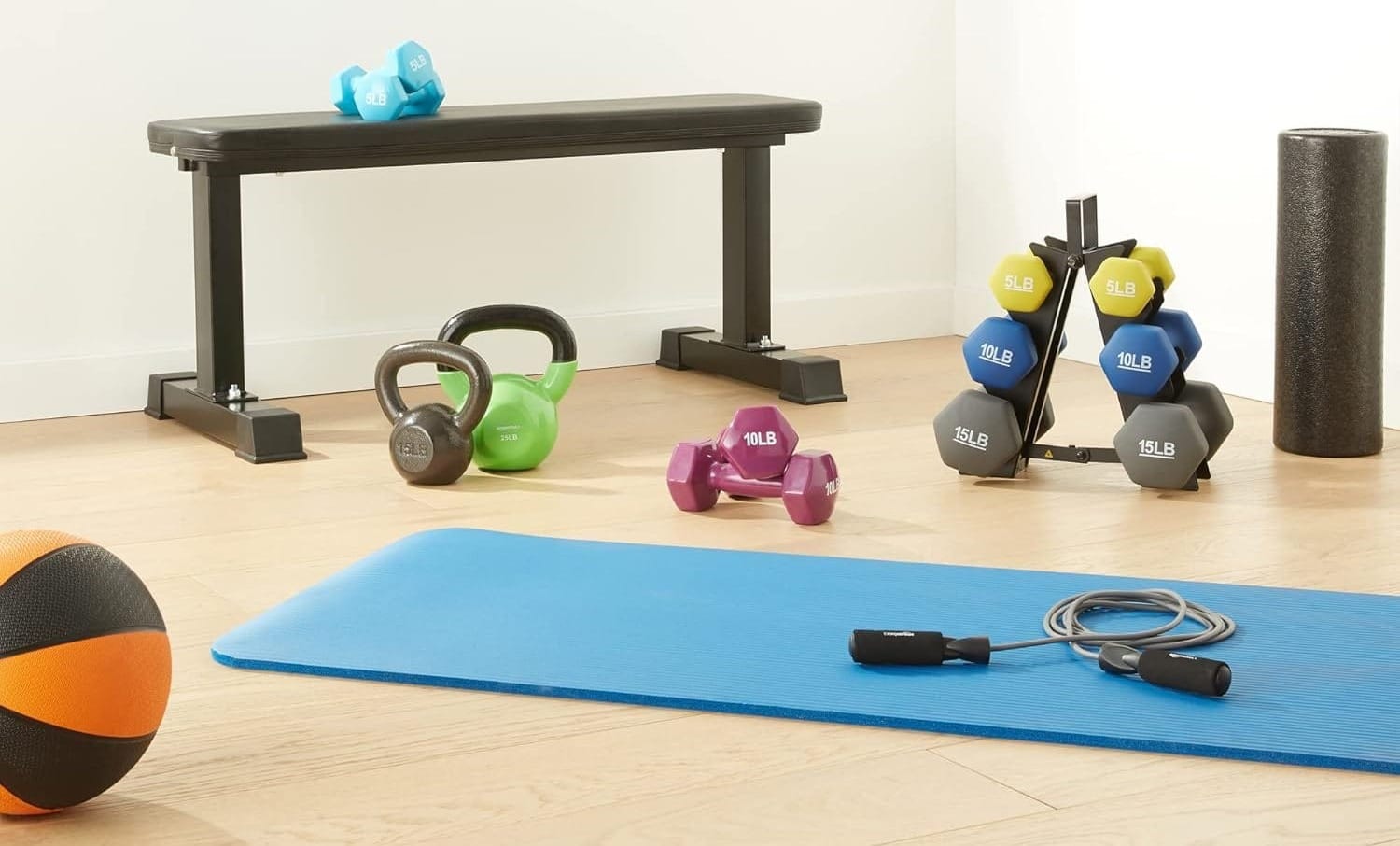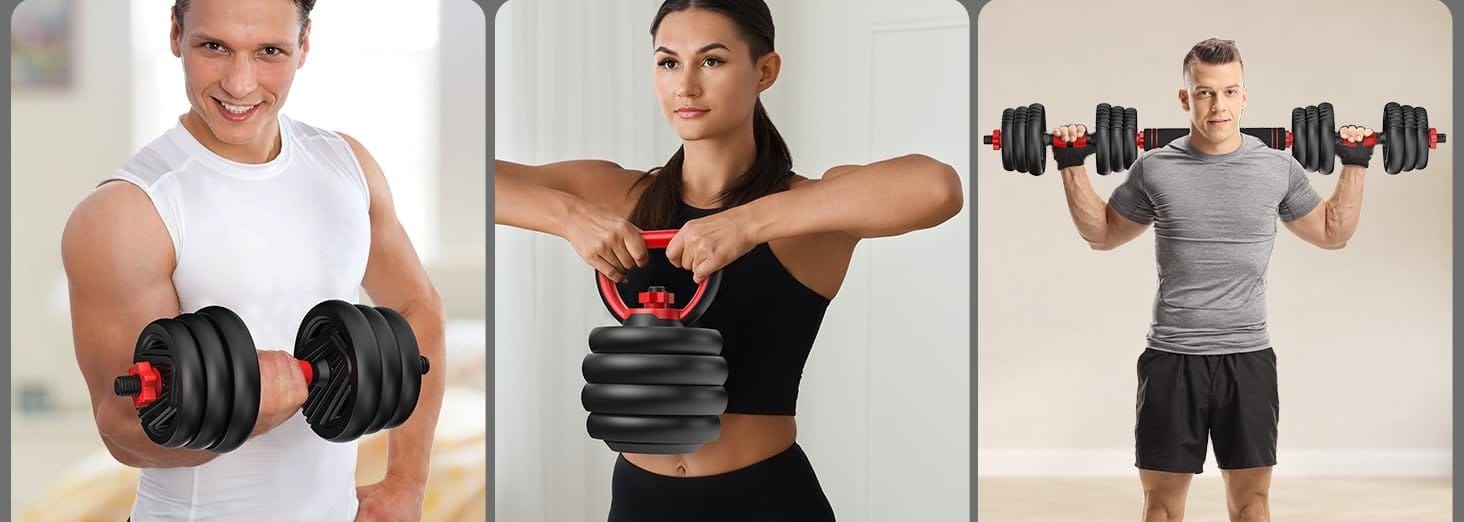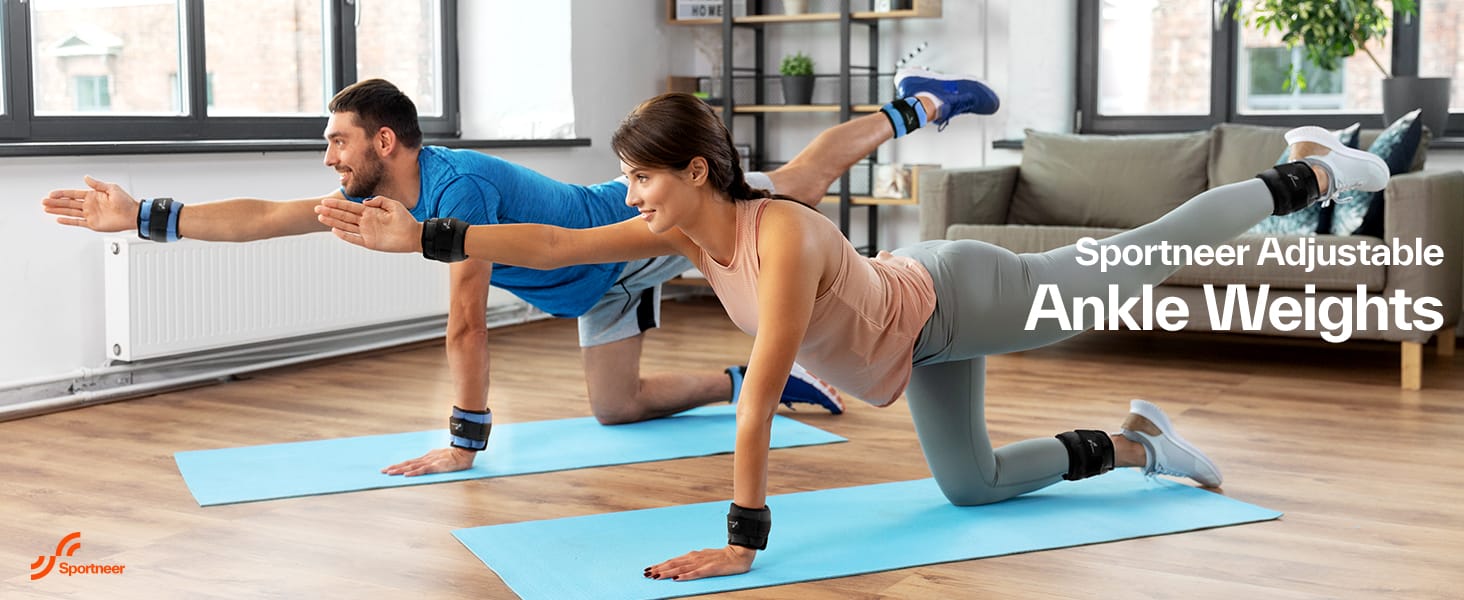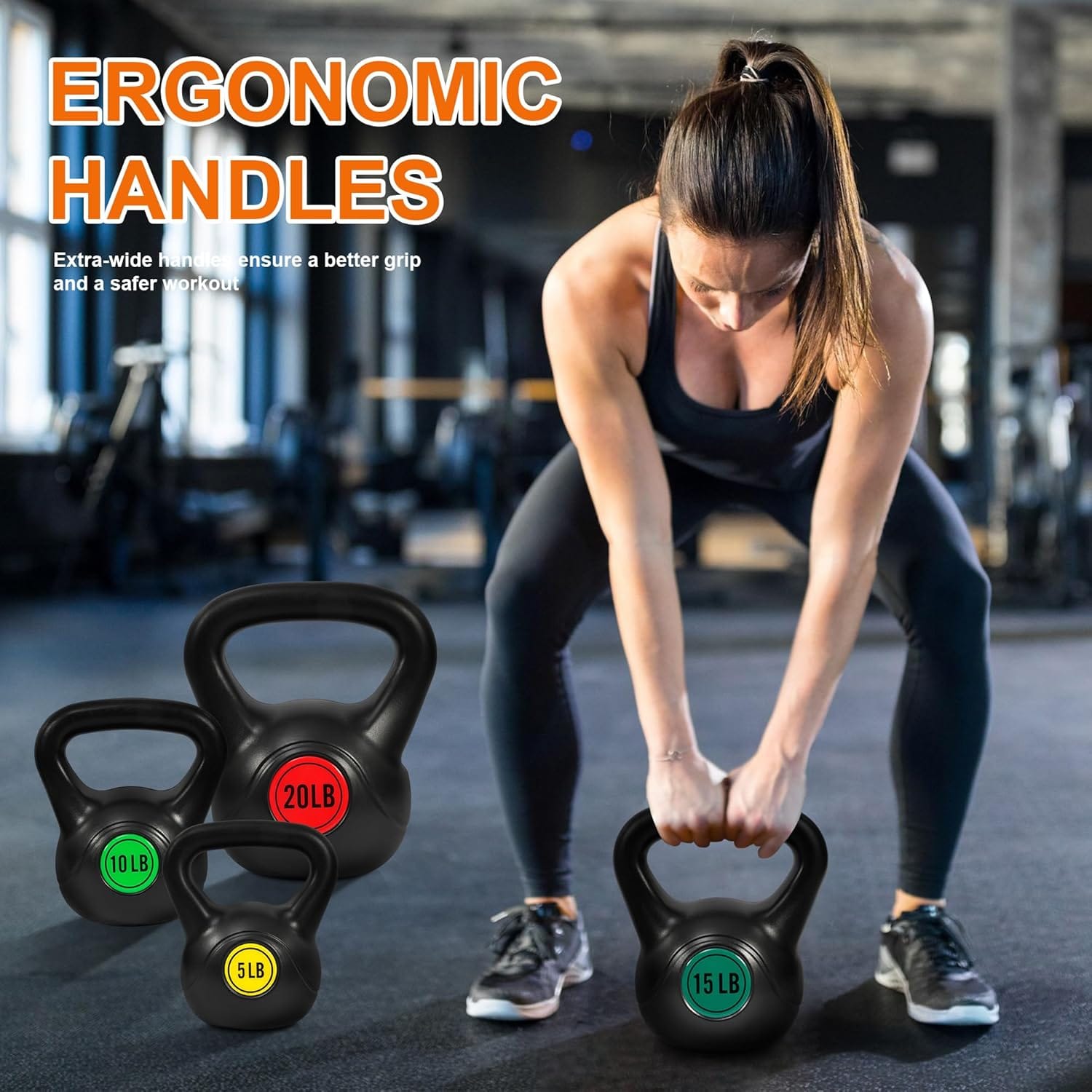The Ultimate Guide to Finding the Best Weights for Seniors
Weights for Seniors - Learn how seniors can safely and effectively use weights to boost strength, improve balance, and maintain independence at any age.

For a long time, the advice for seniors focused primarily on cardio and flexibility. But a growing body of evidence, including research from institutions like the Mayo Clinic, shows that strength training is arguably one of the most important forms of exercise for healthy aging.
As we get older, we naturally lose muscle mass and bone density, a process known as sarcopenia. However, regular, gentle strength training can not only reverse this trend but also improve balance, boost metabolism, and significantly reduce the risk of falls and fractures. The CDC reports that strength training twice a week can lead to a 10% increase in strength and a 2% increase in muscle mass over 6 months for older adults.
This comprehensive guide will walk you through everything you need to know, from a detailed buyer's guide on how to choose the right weights to the top products on the market, to help you find the best weights for seniors and embrace a powerful new way to stay strong and independent.
Buyer’s Guide
How to Find the Best Weights for Seniors
Choosing the right weights is crucial for safety and effectiveness. Here’s what to look for when shopping for the best weights for seniors:
1. Consider the Type of Weight
- Dumbbells: These are the most common and versatile option. They come in various shapes and materials, from classic cast iron to vinyl-coated ones. For seniors, soft-grip or neoprene-coated dumbbells are often best as they are comfortable to hold and less likely to cause calluses.
- Adjustable Dumbbells: A great space-saving option that allows you to change the weight with a quick dial or pin system. This is a good choice for those who are progressing in their strength and want a full range of weights without clutter.
- Ankle/Wrist Weights: These are perfect for adding light resistance to bodyweight exercises, walks, or daily activities. They are soft, comfortable, and a good way to start without using free weights.
- Kettlebells: While kettlebells offer a fantastic full-body workout, their unique shape and swinging motion require good form. They are best for seniors who already have some experience with strength training or are working with a trainer.
2. Start with the Right Weight
The number one mistake is starting too heavy. For most seniors beginning a strength training program, a weight between 2 and 5 pounds (1 to 2.5 kg) is an ideal starting point. The goal is to choose a weight that allows you to perform 10-15 repetitions with good form before your muscles feel fatigued.
3. Look for Ergonomic and Safe Features
Weights should have a secure, non-slip grip. Hexagonal dumbbells are a good choice as they won't roll away when you set them down. Soft-coated dumbbells are comfortable and gentler on your floors.
4. Consider a Set
Buying a complete set of dumbbells (e.g., 2, 3, and 5 pounds) is a cost-effective way to have options as you progress. This allows you to easily switch weights for different exercises without having to buy separate pairs.
Top Picks
Here are five top-selling weight options on Amazon that are highly rated for seniors, based on their safety, comfort, and versatility.
Amazon Basics Neoprene Dumbbell Hand Weights

This is a highly popular starter set that includes a pair of 2, 3, and 5-pound dumbbells. Each weight is coated in a soft, non-slip neoprene that is easy to grip and comfortable to hold. The hexagonal shape prevents them from rolling, and the vibrant colors make them easy to identify.
- Pros:
- Comfortable, non-slip neoprene coating.
- Hexagonal shape for safety and stability.
- Comes in a convenient set for progressive training.
- Cons:
- The weight increments are small, so you may outgrow them quickly.
- The rack they come with can be a bit flimsy.
- Expert Rating: 4.7/5 - The perfect choice for beginners and a great value.
The "Soft-Core" Adjustable Dumbbell

This innovative dumbbell allows you to adjust the weight from 2 to 10 pounds in small increments using a simple twist mechanism. It's a fantastic space-saver that replaces multiple pairs of dumbbells and has a soft, ergonomic handle that is easy on the hands.
- Pros:
- Space-saving, replacing several sets of weights.
- Easy and quick weight adjustments.
- Ergonomic, non-slip grip.
- Cons:
- Higher price point than a traditional fixed-weight set.
- The mechanism can be a point of failure over time.
- Expert Rating: 4.6/5 - The best choice for those with limited space who want to progress.
The "SecureFit" Ankle & Wrist Weights

These adjustable weights are perfect for adding light resistance to walking, seated exercises, or physical therapy. They are made from a soft, breathable fabric with a velcro closure that ensures a secure and comfortable fit. They come in a set with various weight options (e.g., 1 to 5 pounds).
- Pros:
- Hands-free resistance, great for walking or balance exercises.
- Soft and comfortable material.
- Adjustable fit with strong velcro straps.
- Cons:
- Not ideal for more traditional strength exercises like bicep curls.
- It can feel bulky on smaller frames.
- Expert Rating: 4.5/5 - An excellent alternative or supplement to traditional free weights.
The "Easy Grip" Vinyl Dumbbells

This is a classic, no-frills dumbbell set that is known for its durability and ease of use. The weights are made from solid cast iron with a smooth, brightly colored vinyl coating. The grip is slightly larger than the neoprene ones, which can be comfortable for some users, and they are a very affordable option.
- Pros:
- Very durable and easy to clean.
- Good for a simple, straightforward workout.
- Affordable price.
- Cons:
- The grip can be a bit slick if your hands get sweaty.
- Less ergonomic than neoprene-coated weights.
- Expert Rating: 4.2/5 - A reliable, budget-friendly choice.
The "Full Body" Kettlebell Set

This set is for the more advanced senior who wants to incorporate full-body, functional movements. The kettlebells have a smooth, cast-iron handle and a durable vinyl coating. The set often includes a range of weights from 5 to 15 pounds, allowing for a progressive and challenging workout.
- Pros:
- Excellent for functional, full-body movements.
- Durable construction with a comfortable handle.
- Great for improving core strength and stability.
- Cons:
- Requires more knowledge of form to avoid injury.
- Not ideal for beginners.
- Expert Rating: 4.4/5 - A great tool for experienced lifters looking for a new challenge.
Frequently Asked Questions
About Weights for Seniors
Q. Is it safe for seniors to lift weights?
Answer: Yes — in fact, strength training is one of the most beneficial things seniors can do for their health, provided it’s done safely.
As we age, we naturally lose muscle mass, bone density, and balance, which increases the risk of falls and injuries. Lifting weights, even light ones, can help reverse some of that decline by improving strength, bone health, coordination, and overall independence. Research from the National Institute on Aging indicates that regular resistance training can reduce fall risk, maintain mobility, and even enhance quality of life well into the 70s, 80s, and beyond.
The keys to safety are:
- Medical clearance: If you have chronic conditions, joint issues, or haven’t exercised in a long time, check with your doctor first.
- Start light: Begin with 1–3 lb weights for the upper body and 3–5 lb weights for the lower body, focusing on proper form before adding weight.
- Progress gradually: Increase resistance slowly to avoid strain.
- Use joint-friendly equipment: Neoprene-coated dumbbells, resistance bands, or aquatic weights are often more comfortable.
- Supervision helps: A personal trainer or physical therapist experienced with older adults can create a tailored program.
When done right, weight training is not only safe for seniors — it’s one of the best investments you can make in your health, mobility, and independence.
Q. What is the best starting weight for a senior?
Answer: The “best” starting weight for a senior depends on their current fitness level, mobility, and any health conditions—but the golden rule is start light, focus on form, and progress gradually.
For most beginners:
- Upper body exercises: 1–3 lbs per hand (light dumbbells or resistance bands).
- Lower body exercises: 3–5 lbs, since leg muscles are naturally stronger.
- If using resistance bands, start with a light tension band.
Your starting point should allow you to perform 10–15 repetitions with good form, feeling challenged on the last few reps but not straining. The goal is to build confidence, prevent injury, and allow muscles, joints, and connective tissue to adapt.
Tips:
- If you haven’t exercised in a while, begin with bodyweight movements or no resistance, then add weight.
- Listen to your body—muscle fatigue is fine, sharp pain is not.
- Increase weight only when you can comfortably do 2–3 more reps than your target without breaking form.
And remember—strength training just two days per week can bring big benefits for balance, bone health, and independence. Always check with your healthcare provider before starting a new program, especially if you have chronic conditions or joint concerns.
Q. How often should a senior do strength training?
Answer: Most health experts, including the Centers for Disease Control and Prevention (CDC) and the American College of Sports Medicine (ACSM), recommend that older adults do strength training at least 2 days per week.
Here’s what that means in practical terms:
- Frequency: 2 non-consecutive days each week (e.g., Monday & Thursday) to give your muscles recovery time.
- Duration: 20–45 minutes per session, depending on your fitness level and the number of exercises.
- Exercises: 8–10 moves that target major muscle groups (legs, hips, back, chest, arms, shoulders, and core).
- Reps & Sets: Start with 1–2 sets of 10–15 repetitions using a weight that feels challenging but still allows you to maintain good form.
Why it matters: Regular strength training in seniors helps maintain muscle mass, improves bone density, reduces fall risk, and supports everyday independence. Even starting later in life can bring big benefits.
Pro tip: Combine strength training with balance, flexibility, and aerobic activities for the most complete fitness plan—and check with your healthcare provider before starting if you have medical conditions or haven’t exercised in a while.
Q. How does strength training help with fall prevention?
Answer: Strength training is one of the most effective ways to reduce your risk of falling, especially as you age. Here’s why:
- Improves Muscle Strength – Stronger leg, hip, and core muscles give you better control of your movements, making it easier to catch yourself if you trip or lose balance.
- Enhances Balance & Stability – Many strength exercises, like squats, heel raises, and step-ups, also train your balance systems. Over time, this reduces wobbling and unsteadiness during daily activities.
- Supports Joint Health & Mobility – Resistance training helps maintain joint flexibility and range of motion, so you can react quickly and safely in unstable situations.
- Boosts Bone Density – Strong bones are less likely to fracture in the event of a fall. Weight-bearing and resistance exercises stimulate bone growth, which is especially important for preventing osteoporosis-related injuries.
- Improves Reaction Time – Regular training conditions your nervous system to respond faster to slips or uneven surfaces.
Research shows that older adults who strength train at least 2 days a week can significantly reduce their risk of falls and fall-related injuries. Combined with balance exercises and a physically active lifestyle, it’s one of the most powerful tools for staying steady, independent, and confident on your feet.
Q. What if I have arthritis? Can I still lift weights?
Answer: Yes — in fact, lifting weights can be beneficial for many people with arthritis, as long as it’s done safely and with the right approach. Strength training helps support and protect your joints by building the muscles around them, improving stability, and maintaining range of motion.
Here are some key tips:
- Get medical clearance first. Your doctor or a physical therapist can confirm what movements and loads are safe for your specific condition.
- Start light and progress slowly. Begin with very light weights (or even just bodyweight) and focus on correct form before increasing resistance.
- Choose joint-friendly equipment. Neoprene-coated dumbbells, resistance bands, or even water weights in a pool can reduce stress on painful joints.
- Warm up thoroughly. Gentle range-of-motion exercises before lifting can help loosen stiff joints and improve comfort.
- Listen to your body. Mild muscle fatigue is okay, but stop if you feel sharp pain, swelling, or increased joint discomfort.
With the right plan, strength training can improve function, reduce pain, and help you stay active despite arthritis — just make sure to go slow, stay consistent, and adapt exercises to your comfort level.
Key Takeaway
Strength training is an essential component of a healthy, active lifestyle for seniors. By choosing the right weights—starting light, focusing on comfort and safety features—you can build muscle, strengthen your bones, and improve your balance. This simple but powerful form of exercise is one of the best investments you can make in your long-term health and independence.
